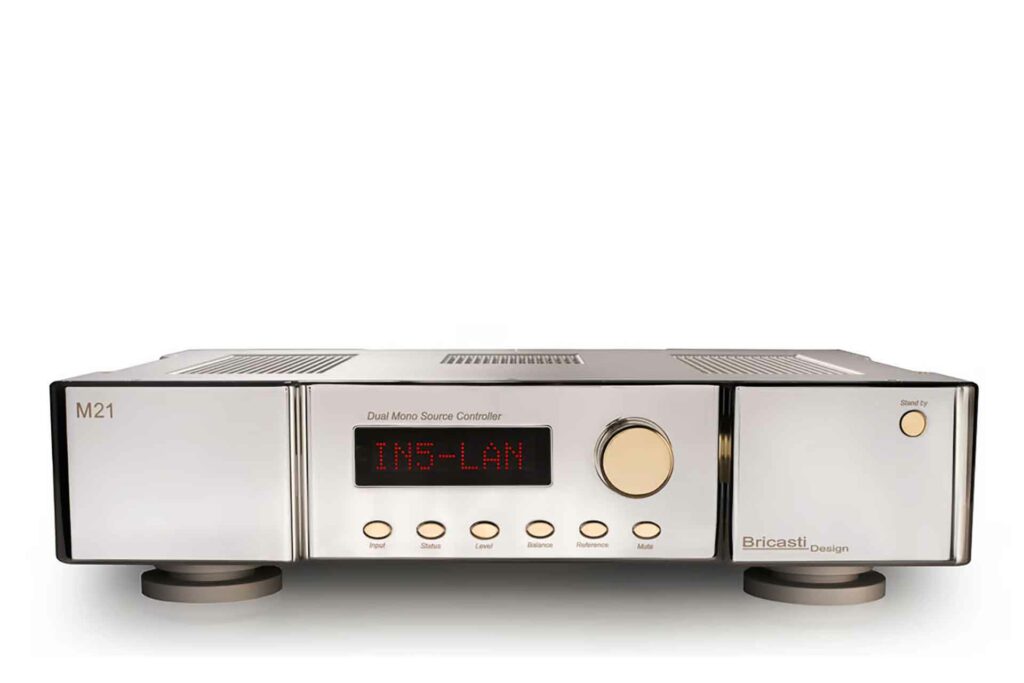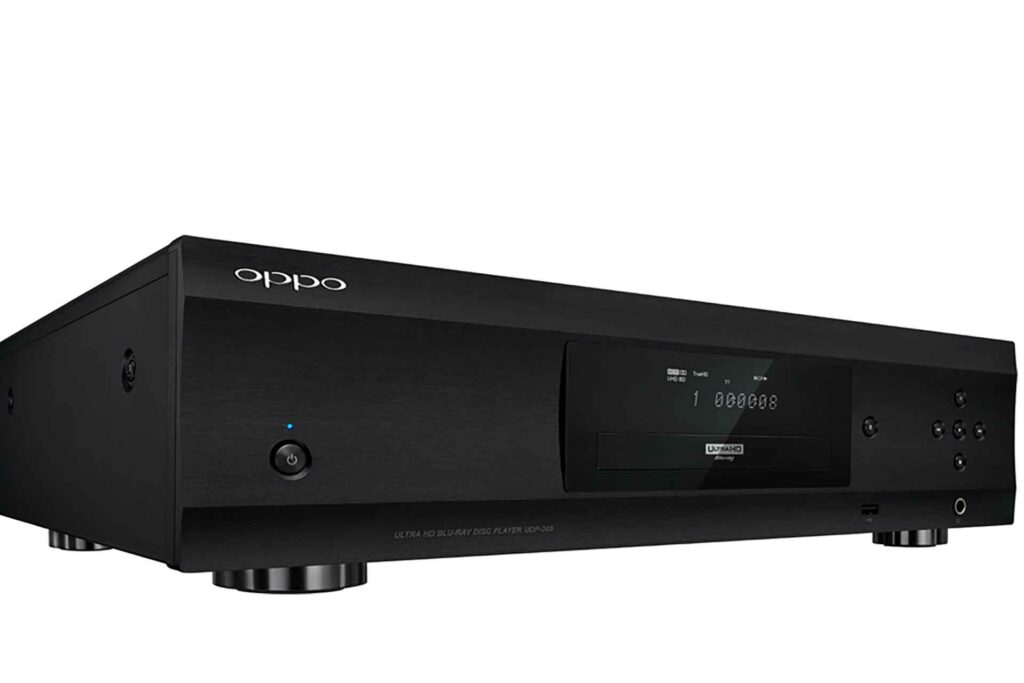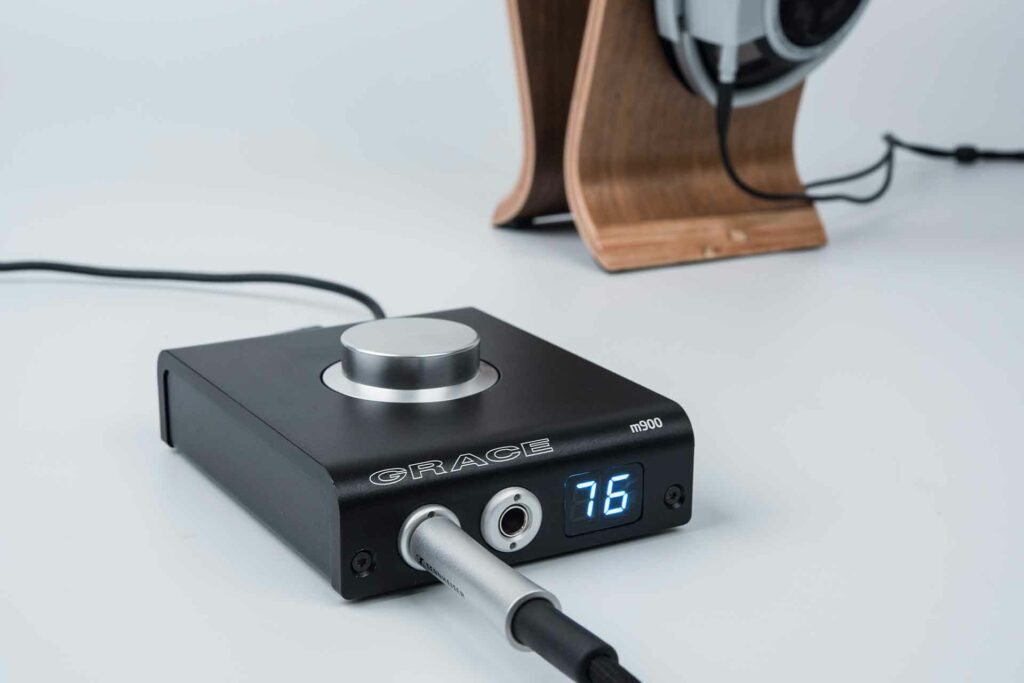Historically, audiophile-grade amplifiers hold their value over time. So do good stereo preamps. The best audiophile floorstanding loudspeakers also hold their value in most cases over a reasonable amount of time. Solidly built audiophile turntables don’t tend to lose their value quickly like a car that is just driven off of the lot. Most audio products retain a good bit of their value over the mid and long term of ownership. With the exception, that is, of digital audiophile components.

There are those in the traditional audiophile print magazines who blindly trash anything digital. And they simply have little to no clue about the realities of recording modern music, archiving music over the long term, or playing back music at the highest possible level. Many of these naysayers were left with some serious egg on their face in the aftermath of the Mobile Fidelity scandal over how that company makes their all-analog records (hint: it includes a healthy bit of digital audio to get a working pressing for most modern vinyl). Vinyl is nice. Vinyl is kitsch. But nobody who owns the rights to a record like Michael Jackson’s Thriller (think: Sony Music) is going to let the original master tape go through an analog tape machine as many times as it would take to do a decent run of a one-step vinyl record. Physically and logistically, that’s purely insane, especially when a digital copy of said record is basically an exact copy of the master tape.
The issue with audiophile digital isn’t how close it can get to the master, because we know it is as close as you can come to an exact match. The topic of the day is how audiophile digital components (CD transports, streamers, DACs) fail to retain their value – especially at the very high end of the audiophile market. Simply put, no one component category has the ability to lose more of its value more quickly than digital audiophile components. DACs, transports, streamers – you name it, they have the possibility for you to lose your ass in a financial transaction.
Are there exceptions? There always are, and the one that comes to mind is Oppo Digital, a company who today makes iPhone-level phones for the rest of the world, but who years ago found a consumer electronics niche making universal disc players and selling them at a pretty fair price. The global consumer electronics icon was smart to pull out of this small niche business a few years back when streaming and streamers were fast becoming the standard. As soon as Oppo pulled out, few of the larger, Asian companies were evolved enough to fill the gap in the market left by Oppo leaving. Consumers wanted one player that could play their aging, legacy HD disc formats (DVD-Audio and SACD discs) in one chassis and for years Oppo was the best solution for that, resulting in used prices for Oppo players to be many times north of retail. Today, a new player called Reavon has come to market with a player that plays all of the current disc formats for about $1,000, and the market has settled down. Needless to say, the Oppo example is a rare one, as there are far more examples of expensive audiophile digital components being worth a small fraction of their retail price in mere years.

Paul Wilson’s reference system is a long-time writer for us dating back to our last audiophile publication. He’s got one hell of an evolved audiophile system, with reference grade components from T+A, VPI, Nordost, Mark Porzilli, and AudioQuest. His current DAC is a nearly 10-year-old reference-level Esoteric unit that has outlived its role as a state-of-the-art digital-to-analog converter, but is still a fine audio component. One of Paul’s friend’s was kind enough to recently lend him a wonderful modern DAC from EMM Labs that is one third the retail price of his current DAC at $10,000, and according to Paul the difference between his current reference DAC and his buddy’s EMM $10,000 DAC was like “bringing a knife to a gun fight” in terms of performance. According to Paul, the performance wasn’t even close,opening his eyes to the possibility of a pending system upgrade. Paul is now loading up on some of the best DACs in the cost-no-object world for head-to-head evaluation in search of his next DAC. We will have reviews of each every one of them, ranging from PS Audio DirectStream DAC MK2 at $7,999 to the aforementioned EMM Labs at $10,000 to a T+A SD 3100 HV reference-level option at $38,000, as well as likely a Bricasti M21 Platinum Edition DAC priced slightly under $20,000.
You will note that the prices of the DACs that Paul is looking at is all over the place in the high-end category. There’s no predictable reason as to why high-end DACs cost what they do. The simple fact is that today’s DAC chips perform literally perfectly, yet the chips don’t cost a fortune on the open market as other semiconductors do today. Get this… today’s DAC chips output basically a perfect signal, so what more do you need? Your iPhone is a “perfect DAC.” So is the DAC in your $99 Sony Blu-ray player. So is that Schiit $139 DAC. They are all excellent performers.
So why is there a high-end DAC market at all?
The audiophile hobby has always been about finding the Nth degree of performance, and it will likely always remain as the driving force behind the hobby. Audiophile companies are willing to go to extreme lengths to find very small levels of performance improvement and often the cost of getting these next-level improvements is exorbitant. Managing heat is a big issue and often can be a costly one. Creating the best, most sophisticated power supplies can help a high-end DAC, and that can run the price up quite a bit, especially when it ends up in a two-chassis solution. Digital clocking issues can get tricky and expensive. Multi-processor designs can run the prices up. Over the years, adding factors like USB and network connectivity has been the big issue for modernizing DACs – far more than any changes in DAC chips, which many argue are already “perfect” in terms of performance. You don’t need any unobtainuium or anything too bat-shit-crazy to get your audiophile digital component to cost a fortune.

What’s changed in recent months/years is the advent of DAC designs that are far more accepting of both firmware and software updates. Paul calls his Esoteric DAC a “boat anchor,” but that’s a bit harsh as it is still worth a few grand after 10 years of nearly daily use. Even at $30,000 over 10 years (assuming the DAC is worthless at 10 years, which it absolutely isn’t), that is a little less than $9 per day to listen to his DAC. Could he have done it for less? Without question. Does he regret his investment? Not at this point, but then again, he’s got the itch and the budget for an upgrade.
What will Paul find in the world of high-end DACs? The most important element today is upgradability. Being able to keep a reference level component performing at reference levels into the future greatly improves the long-term outlook for value in this often-murky world of audiophile financial losses. That’s the biggest issue going into 2023, which is being able to stay state-of-the-art without the fear of some new, whiz-bang technology or implementation twist coming out and changing the game. Better firmware and software upgrade paths point to a new era when you can invest more in digital without worry of getting crushed financially.
With all of this talk of big money investments in high-end audiophile DACs, I had a small DAC from a pro audio company sent to Paul for his consideration, if for no reason other than comparison sake. We sent him a Grace Audio m900 DAC, which is an odd form-factor DAC/headphone amp from a company that a few of our reviewers are flipping out over. It is $600 and it reportedly is something else. One reviewer said it performed in his estimation within 90 percent of a highly respected, audiophile grade DAC that costs $5,000. That’s incredible, but not unheard of in the world of digital audio (review is coming soon, don’t worry).
Perhaps more than any other category, you can find an outrageous performer and/or a stunning bargain in the world of audiophile digital. I just spoke with the old Stereophile value-writer Sam Tellig a few weeks back, who heard about FutureAudiophile.com and wanted to chat about what we’re doing. I was able to tell him about the Rotel CDP-855 CD player and Audio Alchemy DDE 1.0 DAC that I bought when I was 16 years old because of his recommendation. Those were true digital audiophile values back in the very early 1990s. There are arguably even more of them on the market today with the vast improvements in digital technologies over the years.
Some argue that you must be insane to spend big money on a DAC, but those people are often the ones without the budget to even consider such an investment. Let’s not be judgmental here, as those seeking the Nth degree of performance know that it is an expensive road to climb – especially on the digital part of the equation. Those who buck up big time (like Paul will likely do after he tests a ton of uber-high-end DACs) need to understand that when they do that, they’ve put a big bet in a volatile market segment. They are grown adults with big money and they know what they are doing. They know what this gear costs to own and they also can justify the value of it from their overall entertainment budgets. They know that they can get burned, but how can you argue that Paul got burned when he’s going to get roughly 20 cents on the dollar back on a 10-year-old digital investment when he’s rocked out to it nearly every day since the Esoteric came out of the box? And by the way, who’s to say that the next person isn’t going to get one fantastic DAC for a good price when they buy his Esoteric used?
What’s important to know is that the world of high-end digital audio is fast changing and risky in ways that no other audiophile category is. Nobody should build their system around bigger investments in say DACs and streamers than they do speakers and acoustics. But for the folks who have been working their way up the audiophile food chain for years (or decades in many cases), are they crazy to make a big investment in high-end audiophile digital components? That is for them to answer – not us. The risks are clear and the rewards sound really tasty.




Chicken and Eggs.
As a long time loudspeaker designer, there is NOTHING more important than a solid front-end beginning at the source.
If one cannot resolve a better quality source on the back-end (loudspeaker/amps) the curve between best quality components and good quality components flattens pretty quickly.
Loudspeakers are the greatest source of distortion in ANY audio system. Room, too. However it is pretty pointless to have a DAC capable of 0.005% THD when you are running through a tube amp with 0.5% THD, or even a good amp with 0.01%. These numbers should not be audible to us, however in kind with an entire system (where synergy counts) this is where things can get tricky when we actually listen to the music and form our opinions about the overall sound.
Relevant to modern digital, I have found my experience with GOOD modern digital (not esoteric pieces using DAC chips from the 80’s) come with the expense not from the conversion, any digital component can do that, but from the ability to reduce jitter, clock the information, have extremely stiff supplies for the analog section, yadda yadda yadda.
This is a slippery slope, however I believe in as system like Paul Wilson’s, a higher quality DAC, which takes much of its expense from the extreme precision and quality required to perform at the highest level, becomes very relevant for his personal listening goals.
That said, here is a value argument: I purchased my Bricasti M1 twelve years ago, B-Stock for $5,000. I have put $3,000 total into it in factory offered upgrades over the yeas (most recent to the M1 Series II) because Bricasti believes in keeping their equipment relevant. is $600/year of ownership all that bad for a boring person like myself who listens to music way more than I do anything else with my leisure time. People spend far more on hobbies per year, so for me, in scope of what I love, that is a deal!
At the end of the day, virtue in all things. I think there needs to be some care in anyone investing in a super high end DAC, especially if resale is a concern. However that is why we (Future Audiophile) is here, no? To get to the bottom of this stuff and make solid recommendations to help everyone, at all levels, make the most of their musical journey?
Yes, I am a Grace M900 fanboi as you know. Imagine if they put that thing in a nice chassis with a solid, linear power supply? Dare to dream!
“The issue with audiophile digital isn’t how close it can get to the master, because we know it is as close as you can come to an exact match. ”
Comments: “…an exact match”? This ignores all the well-known ADC and DAC errors in the reconstructed signal relative to the analog which are inherent to the basic technology which inevitably loses much information and adds distortion especially in the time domain. These are things like the inevitable presence of aliasing components folded down into the audio range because of inadequate Redbook sample rate of 44kHz or even 96kHz (they’re not completely canceled out by oversampling, which is itself an approximation), use of tricks like dither to improve low-level resolution, etc. etc. Another example is the difference in sound quality between the usual delta-sigma type DACs and old-fashioned R2R DACs. My personal preference is the best current R2R DAC technology. Neither is absolutely right.
Regardless of the “common wisdom” that current digital technology is the perfect sound forever, there is tremendous room for improvement in digital, to bring it closer to the best analog in sound quality.